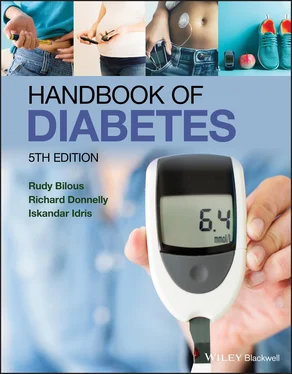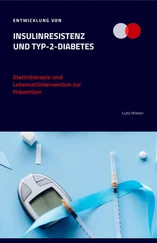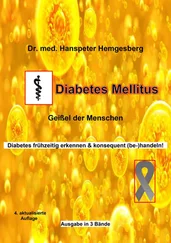14 Chapter 21Table 21.1 NICE has recommended this risk stratification system with appropri...Table 21.2 Wagner Ulcer Classification System.Table 21.3 University of Texas Wound Classification System.
15 Chapter 23Table 23.1 Prevalence of gastrointestinal symptoms in diabetes mellitus and c...Table 23.2 Step‐wise approach to the patient with suspected gastroparesis.Table 23.3 A step‐wise approach to the patient with suspected autonomic diarr...
16 Chapter 25Table 25.1 List of cancers and the strength of their reported association wit...Table 25.2 Potential mechanisms linking diabetes and cancer.
17 Chapter 27Table 27.1 Relative risks (95% CI) for type 2 diabetes in people with serious...
18 Chapter 28Table 28.1 Drugs that may exacerbate or provoke hyperglycaemia.
19 Chapter 29Table 29.1 Diagnostic values of plasma glucose for Gestational Diabetes follo...Table 29.2 Recommended blood glucose targets pre‐ and during pregnancy for bo...
20 Chapter 30Table 30.1 Symptoms before diagnosis in 1260 children with type 1 diabetes.Table 30.2 Clinical features of hypoglycaemia in children.
21 Chapter 32Table 32.1 Recommendations for safe driving in people with diabetes taking in...
22 Chapter 33Table 33.1 National Institute of Clinical Excellence (NICE) for diabetes in A...Table 33.2 Pillars of integration.Table 33.3 The 9 Key Care process. Every person with diabetes is supposed to ...
23 Chapter 34Table 34.1 Types of stem cell and their relative advantages and disadvantages...
1 Chapter 1 Figure 1.1 Estimated comparative raw prevalence of diabetes and impaired glu... Figure 1.2 Rates of major complications of diabetes for the US population de... Figure 1.3 Age standardised mortality rates from diabetes‐related complicati... Figure 1.4 Estimated global diabetes-related healthcare costs for adults age...
2 Chapter 2 Figure 2.1 The Ebers papyrus. The Wellcome Institute Library, London, UK. Figure 2.2 Thomas Willis. The Wellcome Institute Library, London, UK. Figure 2.3 Claude Bernard. The Wellcome Institute Library, London, UK. Figure 2.4 Paul Langerhans. The Wellcome Institute Library, London, UK. Figure 2.5 Charles Best and Frederick Banting in Toronto in 1922 (the dog is... Figure 2.6 Schematic amino acid sequence of human insulin; porcine and bovin...
3 Chapter 3 Figure 3.1 Prevalence of diabetes‐specific retinopathy (moderate or more sev... Figure 3.2 The relationship between 2‐hour plasma glucose and survival in pa... Figure 3.3 Diagnosis of diabetes and IGT by the oral glucose tolerance test .... Figure 3.4 The prevalence of retinopathy in type 2 diabetes relative to the ... Figure 3.5 High‐risk patients who should be screened annually for type 2 dia ... Figure 3.6 Classification of diabetes . Figure 3.7 Using C‐peptide to confirm type 1 diabetes based on residual beta... Figure 3.8 Five replicable clusters of patients with diabetes. Figure 3.9 Clinical features of type 1 and type 2 diabetes. Figure 3.10 Other specific types of diabetes.
4 Chapter 4 Figure 4.1 Rising numbers of people with diabetes worldwide. IDF Atlas, 2017... Figure 4.2 There are estimated to be 425 m patients with diabetes worldwide ... Figure 4.3 An alarming trend in the USA with increasing numbers of patients.... Figure 4.4 Mortality rates due to diabetes‐related complications. IDF Atlas,... Figure 4.5 Premature mortality affects low‐, medium‐ and high‐income countri... Figure 4.6 The relationship between Body Mass Index and the hazard ratio for... Figure 4.7 Healthcare expenditure on diabetes is rising steeply. IDF Atlas, ... Figure 4.8 In the USA the costs of providing diabetes care are enormous. Bas... Figure 4.9 Factors affecting the numbers of patients with type 2 diabetes. Figure 4.10 The shift towards using new, expensive analogue insulins. IMS He... Figure 4.11 A structured lifestyle modification program (aimed at delivering...
5 Chapter 5 Figure 5.1 A section of normal pancreas stained with haematoxylin and eosin.... Figure 5.2 The localisation of pancreatic hormones in human islets. (a) Insu... Figure 5.3 Potential interactions between the secretory products of the majo... Figure 5.4 Structure of a pancreatic islet, showing the anatomical relations... Figure 5.5 A hypothetical model for postnatal pancreatic β cell growth in hu... Figure 5.6 The primary structure (amino acid sequence) of human insulin. The... Figure 5.7 The double zinc insulin hexamer composed of three insulin dimers ... Figure 5.8 Insulin biosynthesis and processing. Proinsulin is cleaved on the... Figure 5.9 (a) Electron micrograph of insulin secretory granules in a pancre... Figure 5.10 The regulated (normal) and constitutive (active in type 2 diabet... Figure 5.11 (a) The biphasic glucose‐stimulated release of insulin from panc... Figure 5.12 The mechanism of glucose‐stimulated insulin secretion from the β... Figure 5.13 The classic experiment illustrating the incretin effect in norma... Figure 5.14 (a) The incretin effect is greatly diminished in patients with t... Figure 5.15 The insulin receptor and its structural domains. Many mutations ... Figure 5.16 The insulin signalling cascade. Insulin binding and autophosphor... Figure 5.17 (a) The structure of a typical glucose transporter (GLUT). (b) T... Figure 5.18 Insulin regulation of glucose transport into cells. Figure 5.19 Profiles of plasma glucose and insulin concentrations in individ... Figure 5.20 Overview of carbohydrate metabolism. cats, catecholamines; cort,...
6 Chapter 6 Figure 6.1 Age and sex standardised incidence rates per 100,000 population p... Figure 6.2 Incidence rates (1999–2003) of type 1 diabetes in 0–14‐year‐olds ... Figure 6.3 Seasonal variation of type 1 diabetes among Finnish children (a) ... Figure 6.4 Insulitis. There is a chronic inflammatory cell infiltrate centre... Figure 6.5 ICA demonstrated by indirect immunofluorescence in a frozen secti... Figure 6.6 Progression to symptomatic Type 1 Diabetes in 585 children with t... Figure 6.7 Potential mechanisms of viral aetiology of autoimmune and non‐aut... Figure 6.8 Proposed mechanisms of β cell death. β cells die through a proces... Figure 6.9 Stages of Type 1 Diabetes as proposed by the Juvenile Diabetes Re... Figure 6.10 Lifetime risk of developing Type 1 diabetes (left axis) compared...
7 Chapter 7 Figure 7.1 The relationship between body mass index (BMI) and risk of type 2... Figure 7.2 Rising obesity rates in the USA (2008‐2015) based on self‐reporte... Figure 7.3 The rising Prevalence of type 2 diabetes parallels the rising inc... Figure 7.4 Age‐adjusted prevalence rates of type 2 diabetes in different geo... Figure 7.5 The IDF atlas also monitors the rising prevalence of prediabetes ... Figure 7.6 A league table of countries showing widely different prevalence r... Figure 7.7 Deaths attributable to diabetes are highest in low‐ and middle‐in... Figure 7.8 The relationship between HbA1c and the incidence of cardiovascula... Figure 7.9 Varying prevalence rates of type 2 diabetes by ethnicity/region a... Figure 7.10 Weight gain is a particularly strong driver of type 2 diabetes r... Figure 7.11 Insulin resistance (as assessed by glucose infusion rate (GIR) t... Figure 7.12 Age‐adjusted risk of type 2 diabetes among 5990 men. The figure ... Figure 7.13 The natural history of type 2 diabetes development often begins ... Figure 7.14 Mechanisms of insulin resistance in type 2 diabetes. Figure 7.15 The ‘thrifty phenotype’ hypothesis. Figure 7.16 β‐cell function as measured by the homeostasis model assessment ... Figure 7.17 Plasma concentrations of glucose and insulin in subjects with ty... Figure 7.18 The stages of glucose tolerance and associated β cell function a... Figure 7.19 Pathogenesis of type 2 diabetes. Both genetic and environmental ...
Читать дальше












